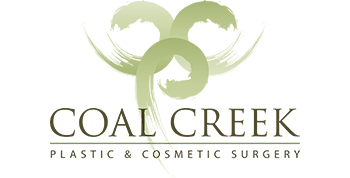Is rhinoplasty strictly cosmetic? Simple answer: No. Rhinoplasty, also known as a “nose job,” can enhance facial balance and nose proportions, as well as correct impaired breathing caused by structural defects in the nose. People elect to have rhinoplasty to change, reduce, or correct:
-
- Nose size in relation to facial balance
- Nose width at the bridge or the size and position of the nostrils
- Nose profile with visible humps or depressions on the bridge
- Nasal tip that is enlarged or bulbous, drooping, upturned or hooked
- Nostrils that are large, wide or upturned
- Nasal asymmetry
Rhinoplasty to Correct a Deviated Septum
Nose surgery that’s done to improve an obstructed airway requires careful evaluation of the nasal structure as it relates to airflow and breathing.
Correction of a deviated septum, one of the most common causes of breathing impairment, is achieved by adjusting the nasal structure to produce better alignment.
Good Candidates for Rhinoplasty
You may be a good candidate for rhinoplasty if:
Your facial growth is complete;
You are physically healthy;
You don’t smoke; and
You have a positive outlook and realistic goals in mind for the improvement of your appearance.
The Rhinoplasty Procedure
What are the steps of a rhinoplasty procedure?
- Anesthesia: During your consultation, your doctor will discuss anesthesia choices, which may include intravenous sedation or general anesthesia.
- Incision: Rhinoplasty is performed either using a closed procedure, where incisions are hidden inside the nose or an open procedure, where an incision is made across the columella, the narrow strip of tissue that separates the nostrils. Through these incisions, the skin that covers the nasal bones and cartilages is gently raised, allowing access to reshape the structure of the nose.
- Reshaping the nose structure: An overly large nose may be reduced by removing bone or cartilage. Sometimes surgery of the nose may require the addition of cartilage grafts. Commonly, cartilage from the septum, the partition in the middle of the nose, is used for this purpose. Occasionally cartilage from the ear or rarely a section of rib cartilage can be used.
- Correcting a deviated septum: If the septum is deviated, it can be straightened and the projections inside the nose reduced to improve breathing.
- Closing the incision: Once the underlying structure of the nose is sculpted to the desired shape, nasal skin and tissue are re-draped and incisions are closed. Additional incisions may be placed in the natural creases of the nostrils to alter their size.
Rhinoplasty Recovery
During your rhinoplasty recovery, a splint and/or packing may be placed inside your nose and a splint or bandages placed on the outside to support and protect the new structures during initial healing.
While initial swelling subsides within a few weeks, it may take up to a year for your new nasal contour to fully refine. During this time you may notice gradual changes in the appearance of your nose as it refines to a more permanent outcome.
Swelling may come and go and worsen in the morning during the first year following your rhinoplasty surgery.
You will be given specific instructions that may include:
- How to care for the surgical site
- Medications to apply or take orally to aid healing and reduce the potential for infection
- Specific concerns to look for at the surgical site or in your general health
- When to follow up with your plastic surgeon
Be sure to ask your rhinoplasty surgeon specific questions about what you can expect during your individual recovery period:
- Where will I be taken after my surgery is complete?
- What medication will I be given or prescribed after surgery?
- Will I have dressings/bandages after surgery?
- When will dressings/bandages be removed?
- Are stitches removed? When?
- When can I resume normal activity and exercise?
- When do I return for follow-up care?
Rhinoplasty Results
The results of rhinoplasty surgery will be long-lasting. While initial swelling subsides within a few weeks, it may take up to a year for your new nasal contour to fully refine. During this time you may notice gradual changes in the appearance of your nose as it refines to a more permanent outcome.
As your body ages, it is natural to have some gradual changes to your face including your nose. But most of your improvement should be relatively permanent.
A healthy lifestyle and life-long sun protection will help extend the results of your new appearance.
Partial content taken from American Society of Plastic Surgeons
If you are considering a rhinoplasty procedure, contact us to schedule a consultation. We will help you assess your needs, discuss your options, and talk about risks, the procedure, and recovery.



